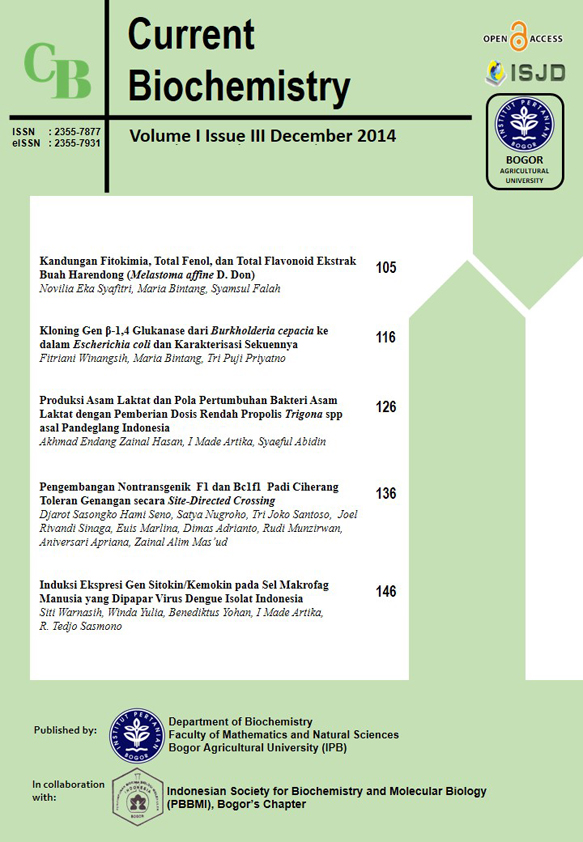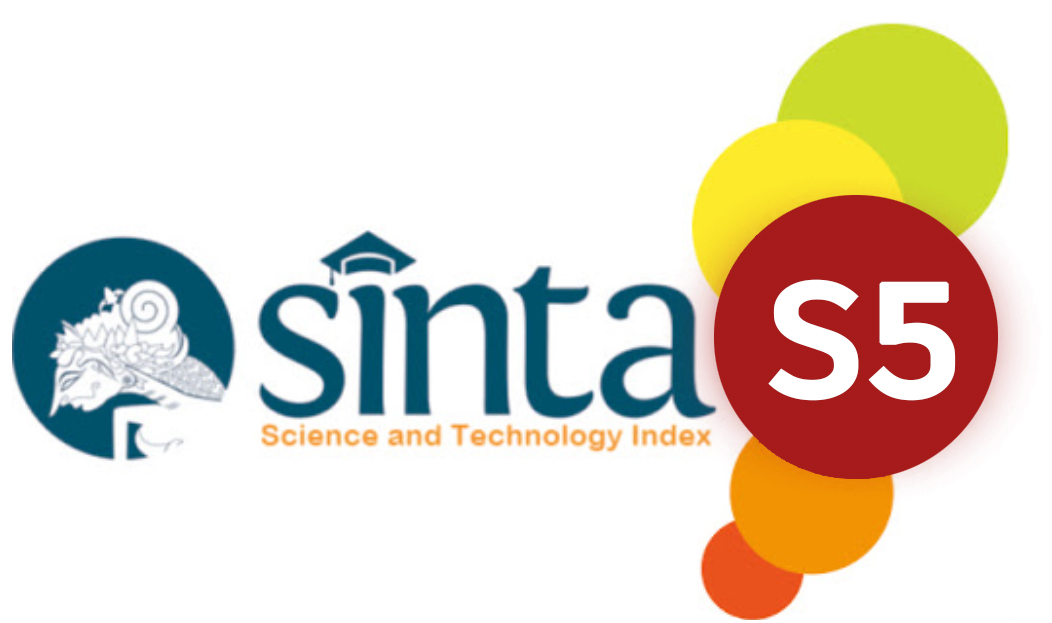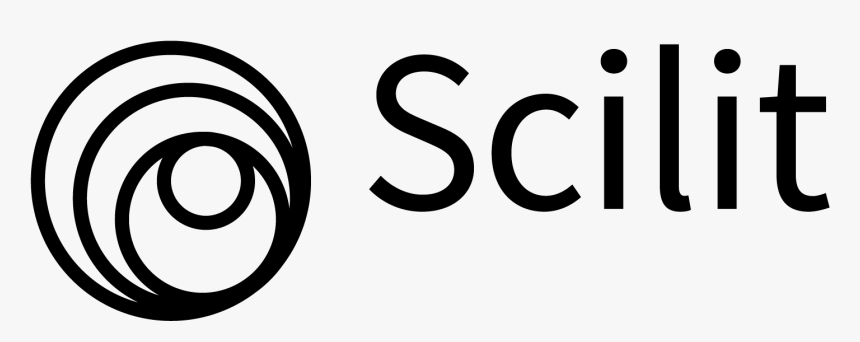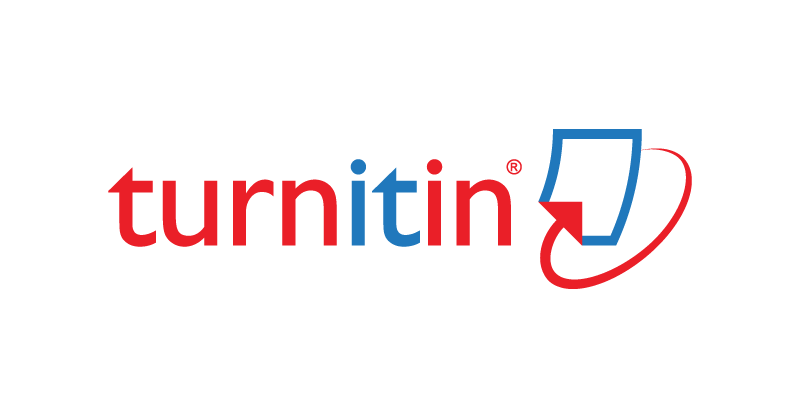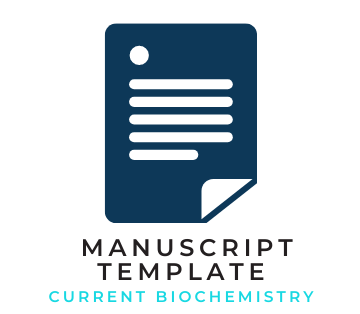Kandungan Fitokimia, Total Fenol, dan Total Flavonoid Ekstrak Buah Harendong (<i>Melastoma affine</i> D. Don)
Abstract
Melastoma affine plant has effect on health such as curing wound and toothache, also as an antimalarial drug. The fruit of this plant is purple and probably contain secondary metabolite compounds such as phenols and flavonoids. The total amount of both compounds may be different in unripe and ripe fruit. The aims of this research were to analyze secondary metabolite compounds and determine total phenol and total flavonoid of Melastoma affine fruit extract. The samples used in this study were unripe and ripe Melastoma affine fruits. Both of samples were extracted by three different solvents (water, 70% ethanol, and 96% ethanol) and obtained 6 extracts. Based on phytochemical test, each extract from unripe and ripe Melastoma affine fruit contained alkaloid, triterpenoid, flavonoid, phenol, and tanin. The extract with highest total phenols was 70% ethanolic extract from unripe fruit (189.56 mg/g GAE), while the extract with highest total flavonoids was 96% ethanolic extract from unripe fruit (225.50 mg/g CE). Based on this result, we conclude that unripe fruit of Melastoma affine has more total phenols and total flavonoids than ripe fruit.
References
[AOAC] Association of Official Analytical Chemist. 2006. Official Methods of Analysis. Washington DC: Aasociation of Official Analytical Chemist.
[BPOM RI] Badan Pengawas Obat dan Makanan Republik Indonesia. 2004. Ekstrak Tumbuhan Indonesia Vol. 2. Jakarta: BPOM.
Crozier A, Clifford MN, Ashihara H. 2006. Plant Secondary Metabolites: Occurrence, Structure, and Role in the Human Diet. Lowa: Blackwell Publishing Ltd.
Cseke LJ, Kirakosyan A, Kaufman PB, Warber SL, Duke JA, brielmann HL. 2006. Natural Products from Plants Second Edition. New York: Taylor & Francis Group.
Gulcin I, Sat IG, Beydemir S, Elmastas M, Kufrevioglu OI. 2004. Comparison of antioxidant activity of clove (Eugenia caryophylata Thunb) buds and lavender (Lavandala stoechas L.). Food Chem.87:393-400.
Harborne JB. 1987. Metode Fitokimia. Bandung: Penerbit ITB.
Harborne UA, Phillips DA. 1991. Release and modification of nod-gene-inducing flavonoids from alfalfa seeds. Plant Physiol. 95:804-807.
Katno. 2008. Penanganan Pasca Panen Tanaman Obat. Balai Besar Penelitian dan Pengembangan Tanaman Obat dan Obat radisional. Depkes.
Kim DO, Jeong SW, Lee CY. 2003. Antioxidant capacity of phenolic phytochemicals from various cultivars of plums. Food Chemistry. 81:321-326.
Myhara RM, Karkalas J, Taylor MS. 1999. The composition of maturing Omani dates. Journal of Science and Food Agriculture.79:1345-1350.
Pekal A, Pyrzynska K. 2014. Evaluation of aluminium complexation reaction for flavonoid content assay. Food Anal. Methods.1-7. DOI: 10.1007/s12161-014-9814-x.
Purwanto Y, Walujo EB. 1992. Etnobotani suku Dani di lembah Baliem-Irian Jaya: suatu telaah tentang pengetahuan dan pemanfaatan sumber daya alam tumbuhan. Di dalam: Prosiding Seminar dan Lokakarya Nasional Etnobotani; Cisarua-Bogor, 19-20 Feb 1992. Bogor: Departemen Pendidikan dan Kebudayaan. hlm 132-148.
Singleton VL, Orthofer R, Lamuela-Raventos RM. 1999. Analysis of total phenols and other oxidation substrates and antioxidants by means of Folin Ciocalteu reagent. Methods Enzymol.299:152-178.
Stankovic MS, Niciforovic N, Topuzovic M, Solujic S. 2011. Total phenolic content, flavonoid concentrations and antioxidant activity, of the whole plant and plant parts extracts from Teuchium montanum L. var. Montanum, F. supinum(L.) Reichenb [catatan penelitian].Biotechnol. 25:2222-2227.
Sunarti S. 2000. Potensi melastoma sebagai tanaman hias. Di dalam: Prosiding Seminar Hari Cinta Puspa dan Satwa Nasional; Kebun Raya Bogor, 5 Nov 2000. Bogor: Herbarium Bogoriense, Balitbang Botani, Puslitbang Biologi-LIPI. 2000. Hlm 224-230.
Uji T. 1995. Pemanfaatan tumbuhan obat antimalaria pada beberapa suku di Indonesia. Di dalam: Prosiding Seminar dan Lokakarya II; Yogyakarta, 24-25 Jan 1995. Yogyakarta: Ikatan Pustakawan Indonesia. hlm 89-95.
Zuhud EAM. 1995. Keanekaragaman tumbuhan obat di Cagar Alam Pananjung Pangandaran. Di dalam: Prosiding Seminar Etnobotani II; Yogyakarta, 24-25 Jan 1995. Yogyakarta: Ikatan Pustakawan Indonesia. hlm 39-51.

